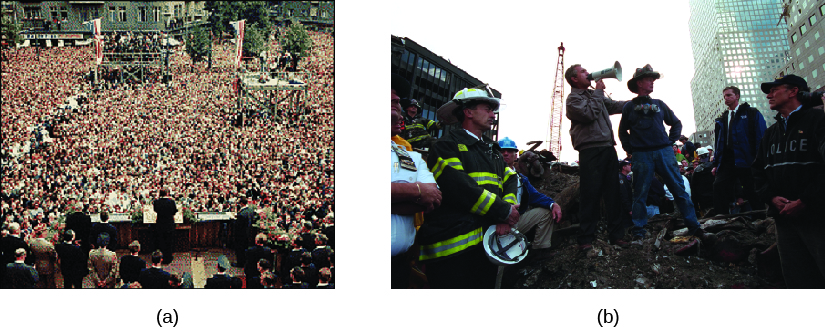| << Chapter < Page | Chapter >> Page > |

Does the thesis’s expectation of a more successful foreign policy presidency apply today? While the president still has stronger foreign policy powers than domestic powers, the governing context has changed in two key ways. First, the Cold War ended in 1989 with the demolition of the Berlin Wall, the subsequent disintegration of the Soviet Union, and the eventual opening up of Eastern European territories to independence and democracy. These dramatic changes removed the competitive superpower aspect of the Cold War, in which the United States and the USSR were dueling rivals on the world stage. The absence of the Cold War has led to less of a rally-behind-the-president effect in the area of foreign policy.
Second, beginning in the 1980s and escalating in the 1990s, the Democratic and Republican parties began to become polarized in Congress. The moderate members in each party all but disappeared, while more ideologically motivated candidates began to win election to the House and later the Senate. Hence, the Democrats in Congress became more liberal on average, the Republicans became more conservative, and the moderates from each party, who had been able to work together, were edged out. It became increasingly likely that the party opposite the president in Congress might be more willing to challenge his initiatives, whereas in the past it was rare for the opposition party to publicly stand against the president in foreign policy.
Finally, several analysts have tried applying the two presidencies thesis to contemporary presidential-congressional relationships in foreign policy. Is the two presidencies framework still valid in the more partisan post–Cold War era? The answer is mixed. On the one hand, presidents are more successful on foreign policy votes in the House and Senate, on average, than on domestic policy votes. However, the gap has narrowed. Moreover, analysis has also shown that presidents are opposed more often in Congress, even on the foreign policy votes they win.
Therefore, it seems presidents no longer enjoy unanimous foreign policy support as they did in the early 1960s. They have to work harder to get a consensus and are more likely to face opposition. Still, because of their formal powers in foreign policy, presidents are overall more successful on foreign policy than on domestic policy.

Notification Switch
Would you like to follow the 'American government' conversation and receive update notifications?